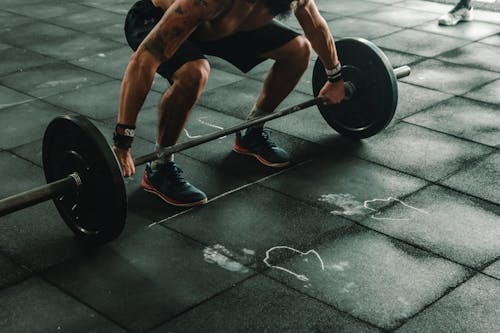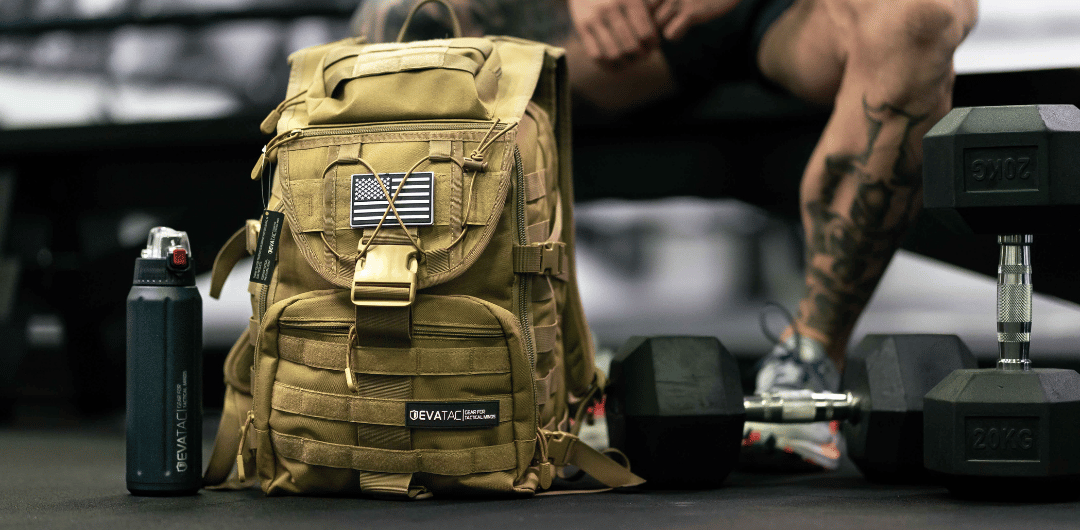Article: Everything You Need to Know About Strength Training Workouts

Everything You Need to Know About Strength Training Workouts
Looking to take your exercise routine to new heights? This comprehensive article will provide you with all the essential information you need to know about strength training - from unravelling its remarkable benefits to mastering the techniques and exercises that shape your physique.
Let's dive in and embark on a transformative journey to optimize your fitness potential!
Understanding Strength Training

In essence, strength training involves performing exercises designed to target your muscles to increase their strength and endurance specifically.
Strength training takes a different approach than aerobic exercises such as running or cycling, primarily focusing on cardiovascular health.
Instead, it centres on building muscle strength and promoting lean muscle mass growth, ultimately transforming your physique and overall fitness level.
Strength training involves using various resistance methods, including free weights, weight machines, resistance bands, or even your own weight.
These resistance methods create tension in your muscles, causing them to adapt and grow stronger.
The principle behind strength training is to progressively overload your muscles, challenging them to work harder with each workout.
As you consistently push your muscles beyond their comfort zone, they respond by becoming more resilient and capable of handling increased loads.

Health Benefits of Strength Training
The benefits of strength training extend far beyond just aesthetics.
While it undoubtedly helps sculpt and tone your body, the advantages go deeper. It enhances your overall functional fitness, making everyday activities easier and reducing the risk of injuries.
Increased Muscle Strength and Mass
When you engage in strength training exercises, you stimulate your muscle fibres, causing them to adapt and grow stronger over time. This leads to improvements in both your muscular strength and power output.
Regular strength training is particularly crucial for preventing age-related muscle loss, a condition known as sarcopenia.
Such exercises help preserve and strengthen your muscles, allowing you to maintain functional abilities and a higher quality of life.
Improved Bone Density and Reduced Osteoporosis Risk
Strength training is vital in promoting bone health and reducing the risk of osteoporosis, a condition characterized by weakened and brittle bones.
You stimulate the production of new bone tissue by subjecting your bones to the mechanical stress and load-bearing demands of strength training exercises.
This, in turn, helps maintain the integrity of your skeletal system and reduces the likelihood of developing osteoporosis later in life.
Enhanced Metabolism and Weight Management
Muscles are metabolically active tissues, meaning they burn calories even at rest. Increasing your muscle mass raises your basal metabolic rate, allowing you to burn more calories throughout the day.
Combining strength training with aerobic exercises creates a powerful synergy for weight management and fat loss.
While aerobic exercises are effective for calorie burning during the workout, strength training helps build and maintain muscle mass, further boosting your metabolism.
Improved Insulin Sensitivity and Blood Sugar Control:
Strength training has positively affected insulin sensitivity, a crucial factor in blood sugar control. Insulin sensitivity refers to how responsive your cells are to the effects of insulin, a hormone that regulates blood sugar levels.
When cells are more sensitive to insulin, they can efficiently take up glucose from the bloodstream, improving blood sugar control.
Regular strength training can be particularly beneficial for individuals with type 2 diabetes or those at risk of developing the condition.
Reduction in the Risk of Chronic Diseases
Engaging in muscle-strengthening activities, such as strength training, is associated with a decreased risk of chronic conditions, including heart disease, stroke, and certain types of cancer.
It improves cardiovascular health by reducing blood pressure, improving cholesterol profiles, and enhancing heart function.
Additionally, the positive effects on body composition, insulin sensitivity, and metabolic health further support a reduced risk of chronic diseases.
Getting Started with Strength Training

Now that we understand the benefits let's explore how to get started with strength training:
-
Assessing Fitness Level and Setting Goals: Determine your strengths and areas for improvement to tailor your program accordingly.
-
Selecting the Appropriate Exercises: Incorporate compound exercises (targeting multiple muscle groups) and isolation exercises (focusing on specific muscles) to ensure a well-rounded workout.
-
Understanding Proper Form and Technique: Consider working with a certified fitness professional or watching instructional videos to ensure proper execution.
-
Incorporating Progression and Periodization: Periodization involves varying the volume and intensity of your workouts to avoid plateaus and optimize results.
Designing a Personalized Strength Training Program
To ensure an effective and safe strength training program, it's essential to consider several key factors guiding your journey toward achieving your fitness goals.
By paying attention to these factors, you can maximize your results while minimizing the risk of injury.
-
Warm-up and Cool-down Routines: Begin each session with a dynamic warm-up to prepare your muscles and joints for the workout. Incorporate stretching and foam rolling exercises during the cool-down to enhance recovery.
-
Determining Frequency and Duration: Aim for at least two to three strength training sessions per week, allowing a day of rest between sessions to promote recovery. The duration of each session will depend on your fitness level and the number of exercises included.
-
Choosing the Right Intensity and Resistance: Use weights or resistance that challenge your muscles without compromising proper form. Start with lighter weights and gradually increase as you become more comfortable and stronger.
-
Planning for Rest and Recovery Days: Adequate rest and recovery are essential for muscle repair and growth. Listen to your body and allow ample time for recovery to avoid overtraining and reduce the risk of injury.
Key Exercises for Strength Training
1. Upper Body Exercises

These exercises target your chest muscles (pectoralis major and minor), shoulder muscles (deltoids), back muscles (latissimus dorsi and rhomboids), and arm muscles (biceps and triceps).
-
Increased upper body strength: Help you develop greater strength and power in your chest, shoulders, back, and arms.
-
Enhanced muscular definition: Help sculpt and define your chest, shoulders, and arms, resulting in a more toned and aesthetically pleasing physique.
-
Improved functional abilities: Crucial role in performing everyday activities such as lifting, pushing, and pulling.
-
Better posture and alignment: Help correct posture imbalances and promote better alignment, reducing the risk of pain and injuries.
Examples of Upper Body Exercises
A. Chest Press
This exercise targets the chest muscles, specifically the pectoralis major and minor.
Chest presses can be performed with dumbbells, barbells, or resistance machines.
-
Lie on a bench or stability ball with a dumbbell in each hand.
-
Extend your arms upward, keeping a slight bend in your elbows,
-
Lower the weights towards your chest in a controlled manner.
-
Push the weights back up to the starting position.
B. Shoulder Press
The shoulder press focuses on the deltoid muscles and helps strengthen your shoulders.
Ensure proper form and avoid arching your back or using excessive momentum to lift the weights.
-
Sit or stand with a dumbbell in each hand, positioned at shoulder level.
-
Press the weights upward until your arms are fully extended overhead.
-
Slowly lower the weights back to the starting position.
C. Bent-Over Rows
This exercise primarily targets the muscles in your back, including the latissimus dorsi and rhomboids.
-
Stand with your feet shoulder-width apart, holding a dumbbell in each hand.
-
Bend forward from the hips while maintaining a neutral spine, allowing the dumbbells to hang directly beneath your shoulders.
-
With your palms facing your body, pull the weights towards your chest, squeezing your shoulder blades together.
-
Lower the weights back down in a controlled manner.
2. Lower Body Exercises

These exercises target your quadriceps, hamstrings, glutes, and calves.
-
Increased lower body strength: Help develop greater strength and power in your lower extremities.
-
Enhanced muscular definition: Help sculpt and define your thighs, glutes, and calves, resulting in a more toned and visually appealing lower body.
-
Improved functional abilities: Improves your ability to perform these activities more quickly and efficiently.
-
Enhanced athletic performance: Contribute to improved athletic performance in sports that involve sprinting, jumping, and agility.
Examples of Lower Body Exercises
A. Squats
Squats are a fundamental exercise that primarily targets the quadriceps, hamstrings, and glutes.
Squats can be performed with body weight, dumbbells, barbells, or kettlebells.
-
Begin with your feet hip-width apart and lower your body by bending at the knees and hips as if sitting back in an imaginary chair.
-
Keep your chest lifted and lower until your thighs parallel the ground.
-
Push through your heels to return to the starting position.
B. Lunges
Lunges are excellent for targeting the quadriceps, hamstrings, glutes, and calves. Start by standing tall with your feet hip-width apart.
Lunges can be performed with body weight, dumbbells, or barbells.
-
Step one foot forward, bending both knees to lower your body towards the ground.
-
Ensure your front knee stays directly above your ankle and your back knee hovers above the ground.
-
Push through your front heel to return to the starting position and repeat on the other side.
C. Deadlifts
Deadlifts primarily target the hamstrings, glutes, and lower back muscles.
Deadlifts require proper form and are often performed with heavier weights, so it's essential to start with lighter loads and focus on technique.
-
Begin by standing with your feet hip-width apart, holding a barbell or dumbbell in front of your thighs.
-
Hinge forward at the hips while keeping your back straight, lowering the weights towards the ground.
-
Push through your heels and engage your glutes to return to standing.
3. Core Exercises
:max_bytes(150000):strip_icc()/Stocksy_txp8e0255fdyiu000_Medium_837932-5707ee3c5f9b581408da695d.jpg)
These exercises target your rectus abdomen, obliques, transverse abdomen, lower back (erector spine).
-
Improved Core Strength: Target and strengthen the muscles in your abdomen, lower back, and pelvis, increasing core strength and stability.
-
Enhanced Posture and Spinal Alignment: Helps maintain proper posture and spinal alignment, reducing the risk of back pain and promoting better overall alignment.
-
Increased Functional Strength and Performance: Essential for daily activities and sports movements, such as lifting, twisting, and throwing.
-
Reduced Risk of Injury: Provides better support and protection for your spine, reducing the risk of lower back injuries during daily activities and exercise.
-
Improved Balance and Stability: Enhancing your ability to maintain balance and perform movements with control.
Examples of Core Exercises
A. Plank
The plank is a classic core exercise that targets the entire core musculature. Variations include side planks and forearm planks.
-
Start by assuming a push-up position with your forearms resting on the ground.
-
Keep your body in a straight line from head to toe.
-
Engage your core muscles.
-
Hold the position for a specific duration, 30 seconds to 1 minute.
B. Russian Twists
Russian twists target the oblique muscles. Be sure to repeat the twisting motion while keeping your core engaged.
-
Sit on the ground with your knees bent and your feet lifted slightly off the floor.
-
Lean back slightly and hold your hands together in front of your chest.
-
Twist your torso to one side, bring your hands outside the hip, and twist to the other.
C. Bicycle Crunches
Bicycle crunches engage the rectus abdomen and oblique muscles. Be sure to continue the pedalling motion, engaging your core throughout.
-
Lie on your back with your knees bent and your hands behind your head.
-
Lift your shoulders off the ground and bring your right elbow towards your left knee as you extend your right leg.
-
Alternate sides, bringing your left elbow towards your right knee while extending your left leg.
4. Compound and Isolation Exercises

Compound exercises target multiple muscle groups and joints, including the chest, back, shoulders, and legs.
Isolation exercises target specific muscles or muscle groups, including the biceps, triceps, calves, and deltoids.
-
Overall Muscle Development: Promoting balanced muscle development and improving overall strength and power.
-
Functional Strength and Movements: Enhancing your functional strength and performance in daily tasks and sports.
-
Time Efficiency: Making your workouts more time-efficient.
-
Muscle Targeting and Refinement: Allowing for more targeted muscle development and refinement.
-
Muscle Symmetry and Balance: Helping achieve muscle symmetry and balance throughout your body.
Example of a combined Workout Routine
A. Squats (Compound Exercise): 3 sets of 8-10 reps
-
Stand with your feet shoulder-width apart.
-
Lower your body by bending your knees and hips.
-
Return to the starting position by pushing through your heels.
B. Bench Press (Compound Exercise): 3 sets of 8-10 reps
-
Lie flat on a bench with a barbell positioned above your chest.
-
Lower the barbell towards your chest.
-
Push it back up to the starting position.
C. Bent-Over Rows (Compound Exercise): 3 sets of 8-10 reps
-
Bend forward with your knees slightly bent.
-
Hold a barbell with an overhand grip.
-
Pull the barbell towards your chest while keeping your back straight.
D. Bicep Curls (Isolation Exercise): 3 sets of 10-12 reps
-
Hold a dumbbell in each hand with your palms facing forward.
-
Keep your upper arms stationary.
-
Curl the weights towards your shoulders, contracting your biceps.
E. Tricep Dips (Compound Exercise): 3 sets of 10-12 reps
-
Position yourself on parallel bars or a stable surface with your arms straight.
-
Lower your body by bending your elbows.
-
Push yourself back up to the starting position using your triceps.
F. Lunges (Compound Exercise): 3 sets of 10-12 reps per leg
-
Stand with one foot forward and the other foot back.
-
Lower your body by bending your knees.
-
Lower your back knee towards the ground.
-
Return to the starting position and repeat with the other leg.
Safety and Injury Prevention
-
Begin each session with a dynamic warm-up to increase blood flow and prepare your muscles for the workout.
-
Use equipment that is suitable for your fitness level and provides proper support.
-
Maintain good posture throughout each exercise to protect your spine and joints.
-
Focus on executing each exercise properly to maximize results and prevent injuries.
-
Consider working with a certified fitness professional who can provide guidance and ensure proper form and progression.
Nutrition and Recovery for Strength Training

Balanced Diet and Protein Intake
Consume a well-balanced diet of lean proteins, whole grains, fruits, vegetables, and healthy fats. Adequate protein intake is crucial for muscle repair and growth.
Aim for approximately 0.8 to 1 gram of protein per kilogram of body weight.
Hydration
Stay hydrated before, during, and after workouts to support optimal performance and recovery.
Aim to drink water throughout the day, and consider sports drinks during intense or prolonged training sessions.
Rest, Sleep, and Recovery Strategies
Allow your body ample time to rest and recover between workouts. In addition, get quality sleep, as it significantly affects muscle recovery and overall well-being.
Remember to consult with a healthcare professional or registered dietitian to personalize your nutrition plan based on your individual needs.
Lift, Pump, Flex, Repeat
Strength training is a powerful tool for transforming your physique and optimizing your fitness potential.
Beyond the aesthetic benefits, strength training offers many advantages - from increased muscle strength and mass to reduced risk of chronic diseases.
So, ready to embark on your transformative fitness journey?
Take the first step and visit EVATAC for your training equipment and gear accessories to support your strength training journey.
Unlock your fitness potential. Unleash your inner beast.



Leave a comment
This site is protected by reCAPTCHA and the Google Privacy Policy and Terms of Service apply.